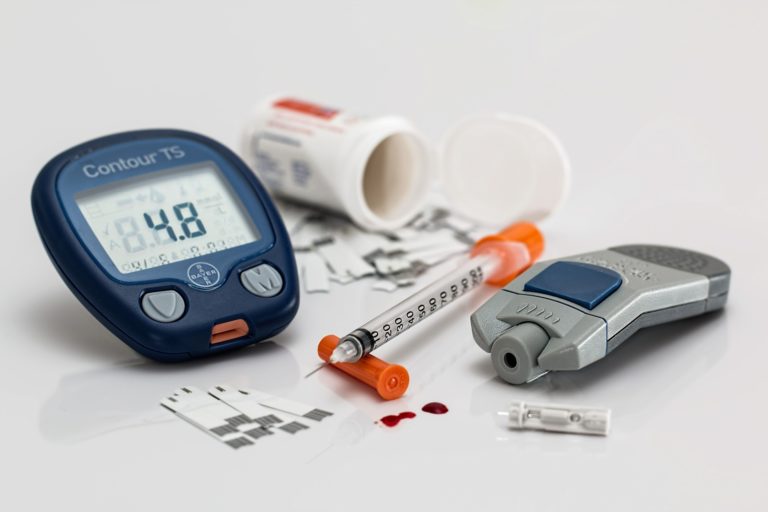VA Secondary Conditions to Diabetes Mellitus Type II

CCK Law: Our Vital Role in Veterans Law
Diabetes can cause a wide range of other medical issues. Veterans who are service-connected for diabetes and develop a secondary condition could qualify for VA disability benefits for the secondary disability.
Diabetes Mellitus Type II Explained
Diabetes mellitus type II is a chronic condition that affects the way an individual’s body metabolizes glucose (i.e., sugar). With type II diabetes, a person’s body either resists the effects of insulin (i.e., a hormone that regulates the movement of sugar into your cells) or does not produce enough insulin to maintain normal glucose levels. Signs and symptoms of type II diabetes often develop gradually over time. However, the most common symptoms include the following:
- Increased thirst
- Frequent urination
- Increased hunger
- Unintended weight loss
- Fatigue
- Blurred vision
- Slow-healing sores
- Frequent infections
- Areas of darkened skin, usually in the armpits and neck
Again, type II diabetes occurs when the body becomes resistant to insulin or when the pancreas is unable to produce enough insulin. However, the exact cause for type II diabetes remains unknown. Current research suggests that genetics and environmental factors are both contributing factors.

VA Service Connection for Diabetes
Presumptive Service Connection
The Institute of Medicine concluded in its 2000 report, “Veterans and Agent Orange: Herbicide/Dioxin Exposure and Type 2 Diabetes,” as well as in subsequent updates, that there is limited/suggestive evidence of an association between exposure to herbicides and type II diabetes. As a result, diabetes mellitus type II is included on VA’s list of presumptive conditions associated with exposure to Agent Orange. Veterans who served in some of the following areas during the specified time periods and later developed diabetes mellitus type II do not have to prove a connection between their condition and military service to receive disability compensation or VA healthcare:
- Veterans with “boots on the ground” and those serving on inland waterways in Vietnam between January 9, 1962 and May 7, 1975;
- Blue Water Navy veterans who served within 12 nautical miles seaward of the demarcation line of Vietnam between the same dates;
- Veterans “who flew on or worked on C-123 aircraft” during the Vietnam War era;
- Veterans who served along the Korean Demilitarized Zone (Korean DMZ) between September 1, 1967 and August 31, 1971
Importantly, this list does not include Vietnam veterans who served in Thailand, as they are not included under VA’s presumption of exposure. However, VA recognizes that herbicides were used along the perimeter of certain Royal Thai Air Force Bases in Thailand to increase visibility and prevent guerilla attacks during the following time period:
- Between January 9, 1962 and May 7, 1975
VA says that it will concede exposure for Thailand veterans if they were on or near the perimeter through credible evidence (e.g., official records or lay evidence). Therefore, to receive service-connected compensation for diabetes mellitus type II, Thailand veterans must show on a factual basis that they were exposed to Agent Orange during their service and have a current diagnosis of the condition.
Direct Service Connection
Veterans with diabetes mellitus type II who do not qualify for presumptive service connection can still receive disability benefits, but must prove the following: (1) a current diagnosis of diabetes mellitus type II; (2) an in-service event, injury, or illness; and (3) a medical nexus linking the diabetes mellitus type II to the in-service incurrence.
How VA Rates Diabetes Mellitus
Diabetes mellitus type II is rated by VA under 38 CFR § 4.119, Diagnostic Code 7913. Ratings for type II diabetes vary among veterans based on the progression or severity of their condition. Below are the criteria VA has set in place to rate veterans with type II diabetes:
- 100% – requiring more than one daily injection of insulin, restricted diet, and regulation of activities (avoidance of strenuous occupational and recreational activities) with episodes of ketoacidosis or hypoglycemic reactions requiring at least three hospitalizations per year or weekly visits to a diabetic care provider, plus either progressive loss of weight and strength or complications that would be compensable if separately evaluated.”
- 60% – requiring one or more daily injections of insulin, restricted diet, and regulation of activities with episodes of ketoacidosis or hypoglycemic reactions requiring one or two hospitalizations per year or twice a month visits to a diabetic care provider, plus complications that would not be compensable if separately evaluated
- 40% – requiring one or more daily injection of insulin, restricted diet, and regulation of activities
- 20% – requiring one or more daily injection of insulin and restricted diet, or; oral hypoglycemic agent and restricted diet
- 10% – manageable by a restricted diet only
VA Secondary Conditions to Diabetes
As evidenced by the above-mentioned rating criteria, diabetes mellitus type II can be managed if the appropriate care is implemented. However, if blood sugar levels are not properly controlled, long-term complications may arise that could qualify a Veteran for secondary service connection based on diabetes. Such complications can eventually be disabling or even life-threatening. Examples include the following:
- Diabetic peripheral neuropathy (nerve damage)
- Renal (kidney) dysfunction
- Diabetic retinopathy
- Erectile dysfunction
- Cardiac conditions (e.g., coronary artery disease, heart attack, stroke)
- Arteriosclerosis
- Hypertension (high blood pressure)
- Peripheral vascular disease (narrowed blood vessels)
- Skin conditions
- Eye conditions other than diabetic retinopathy (e.g., cataracts)
To apply for service connection for one of these secondary conditions, veterans must file a claim the same way that they would file an initial claim for VA disability benefits. From there, veterans must demonstrate two things to VA:
- A current diagnosis of diabetes mellitus type II
- Medical evidence showing the relationship between the primary service-connected condition (i.e., diabetes mellitus type II) and the secondary condition
Importantly, the secondary condition must be “at least as likely as not” caused or aggravated by the veteran’s type II diabetes.
Was Your VA Claim for Conditions Secondary to Diabetes Denied?
If your VA disability claim based on a secondary condition to diabetes has been denied, the legal team at Chisholm Chisholm & Kilpatrick LTD may be able to help. Contact us today for a free case review.
About the Author
Share this Post
